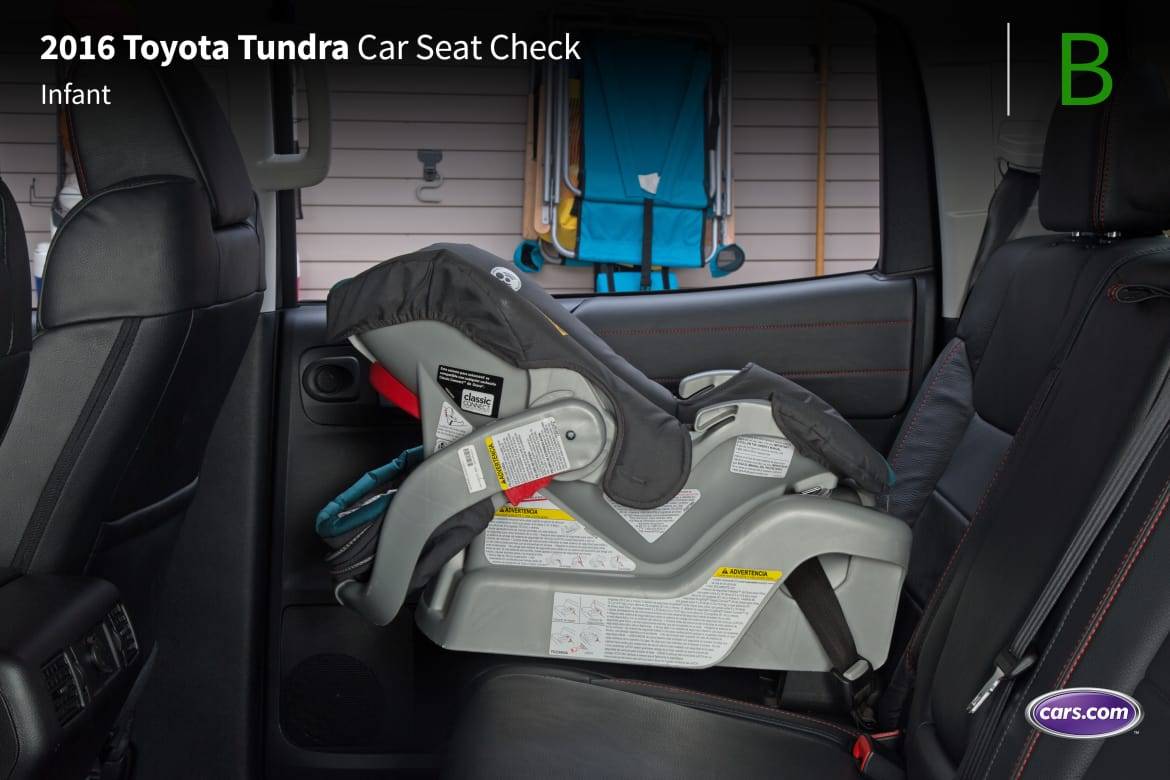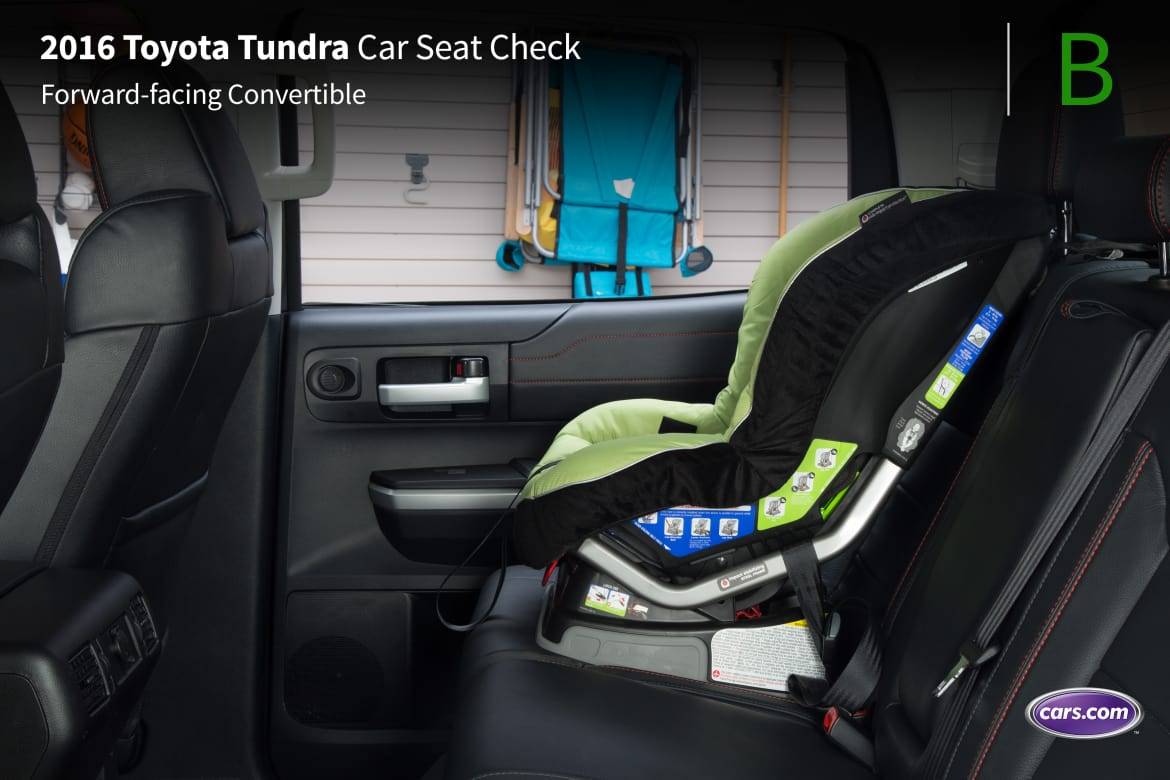2016 Toyota Tundra: Car Seat Check


CARS.COM — In our Car Seat Checks, full-size trucks have proven that they can easily accommodate three child-safety seats in the backseat, and the 2016 Toyota Tundra crew cab is no exception. This roomy pickup truck easily handled our three car seats. Our test truck, a Tundra TRD Pro, had a leather interior. It didn’t have running boards, so climbing into the truck wasn’t easy for our 5-foot-8 tester. Kids will need a boost to get into this truck.
How many car seats fit in the second row? Three
What We Like
- Instead of tether anchors, the Tundra has three tether straps that sit behind the rear head restraints. You’ll need to thread the tether connector through the tether strap directly behind the car seat and then hook the connector to the loop that’s in the seating position next to the car seat, which was the middle seat’s tether strap in the Tundra. Learn more about using tether anchors in pickup trucks.
- Both the rear-facing infant seat and convertible seat fit well in the Tundra’s roomy crew cab. We didn’t have to move the front passenger seat forward to fit either seat.
- The forward-facing convertible and high-back booster seat also fit well, thanks to the Tundra’s flat bench seat. The head restraints didn’t interfere with either car seat’s installation.
- The Tundra’s seat belt buckles are on stable bases, making them easier to use for kids in booster seats.
What We Don’t
- Connection to the Tundra’s lower Latch anchors requires a two hands, one to hold the car seat’s connector and the other to push down the seat cushion, which blocks Latch access. It’s not a great setup and negatively affected the installation of our infant and convertible seats.












Grading Scale
A: Plenty of room for the car seat and the child; doesn’t impact driver or front-passenger legroom. Easy to find and connect to Latch and tether anchors. No fit issues involving head restraint or seat contouring. Easy access to the third row.
B: Plenty of room. One fit or connection issue. Some problems accessing third row when available.
C: Marginal room. Two fit or connection issues. Difficult to access third row when available.
D: Insufficient room. Two or more fit or connection issues.
F: Does not fit or is unsafe.
About Cars.com’s Car Seat Checks
Editors Jennifer Geiger and Jennifer Newman are certified child safety seat installation technicians.
For the Car Seat Check, we use a Graco SnugRide Classic Connect 30 infant-safety seat, a Britax Marathon convertible seat and Graco TurboBooster seat. The front seats are adjusted for a 6-foot driver and a 5-foot-8 passenger. The three child seats are installed in the second row. The booster seat sits behind the driver’s seat, and the infant and convertible seats are installed behind the front passenger seat.
We also install the forward-facing convertible in the second row’s middle seat with the booster and infant seat in the outboard seats to see if three car seats will fit; a child sitting in the booster seat must be able to reach the seat belt buckle. If there’s a third row, we install the booster seat and a forward-facing convertible. To learn more about how we conduct our Car Seat Checks, go here.
Parents should also remember that they can use the Latch system or a seat belt to install a car seat, and that Latch anchors have a weight limit of 65 pounds, including the weight of the child and the weight of the seat itself.

Editor-in-Chief Jennifer Newman is a journalist with more than 25 years of experience, including 15 years as an automotive journalist at Cars.com. Jennifer leads the Editorial team in its mission of helping car shoppers find the vehicle that best fits their life. A mom of two, she’s graduated from kids in car seats to teens behind the steering wheel. She’s also a certified car-seat technician with more than 12 years of experience, as well as member of the World Car Jury, Automotive Press Association and Midwest Automotive Media Association. LinkedIn: https://www.linkedin.com/in/jennilnewman/ Instagram: @jennilnewman
Featured stories









